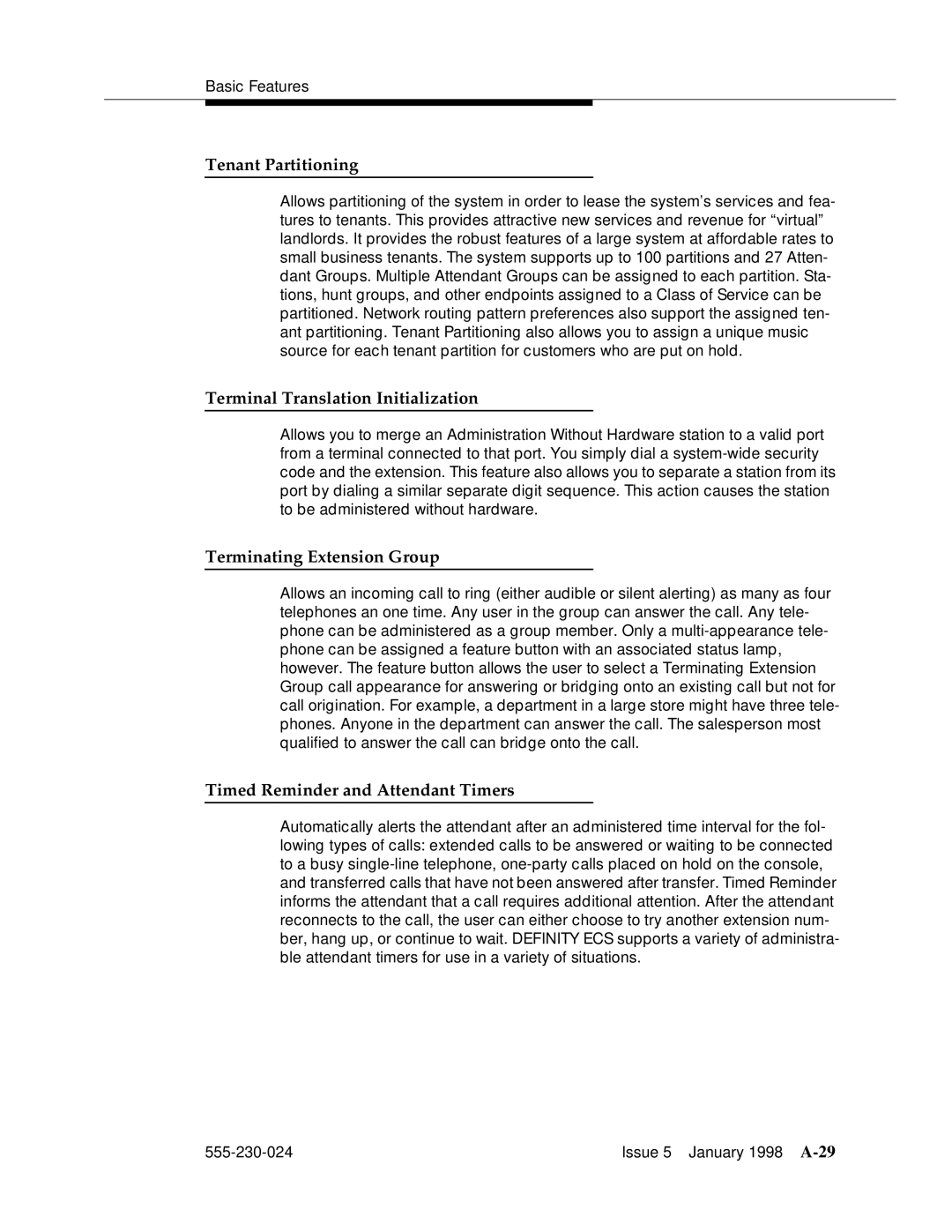
Basic Features
Tenant Partitioning
Allows partitioning of the system in order to lease the system’s services and fea- tures to tenants. This provides attractive new services and revenue for “virtual” landlords. It provides the robust features of a large system at affordable rates to small business tenants. The system supports up to 100 partitions and 27 Atten- dant Groups. Multiple Attendant Groups can be assigned to each partition. Sta- tions, hunt groups, and other endpoints assigned to a Class of Service can be partitioned. Network routing pattern preferences also support the assigned ten- ant partitioning. Tenant Partitioning also allows you to assign a unique music source for each tenant partition for customers who are put on hold.
Terminal Translation Initialization
Allows you to merge an Administration Without Hardware station to a valid port from a terminal connected to that port. You simply dial a
Terminating Extension Group
Allows an incoming call to ring (either audible or silent alerting) as many as four telephones an one time. Any user in the group can answer the call. Any tele- phone can be administered as a group member. Only a
Timed Reminder and Attendant Timers
Automatically alerts the attendant after an administered time interval for the fol- lowing types of calls: extended calls to be answered or waiting to be connected to a busy
Issue 5 January 1998 |
